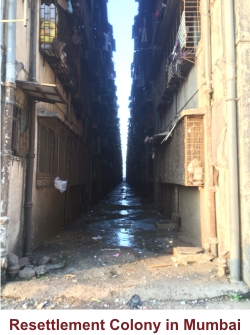|
Social Health as a Dimension of Affordable Housing
Affordable housing is one parameter of adequate housing as elaborated in the General Comment No 4 of the United Nations Assembly on Right to Housing. Contemporarily however, affordable housing has emerged as a dominant theme in several parts of the world, especially in the emerging economies. Brazil's Mia Casa MI Vida (My House, My Life); Sri Lanka's One Million Houses; Indonesia's Million Housing and India's Housing For All are all programmes that stress upon large scale construction of affordable housing for those who are being priced out of housing markets. While affordability is a key dimension of access to housing, particularly in an environment where financialisation of the housing sector and its embedding in world-wide speculation is a reality; a stress upon affordability to the exclusion of other aspects of adequacy has a grave impact upon the outcomes of housing for human quality of life and social health. Housing for the urban poor is critical for the opportunity that it provides – the possible access to livelihoods, and a foothold for further claims to the city. This is the reason why so many thousands stay in the most miserable conditions in an attempt to slowly consolidate their lives in the city while also consolidating their houses in a gradual, incremental manner. Turner (1963) asserted that housing is not a noun but a verb – a space of action from which urban dwellers have been alienated from in an organised construction –finance- state regulation set up. It also adversely impacts the poor. Auto –construction, the preferred mode of construction among this group is a response that enables, in the words of Caldeira (2014) a 'transversal relationship to the official logic of legal property, formal labour, colonial dominance, state regulation and market capitalism'. Such transversal relationships enable a possibility gradual consolidation of claims to the city. A safe, livable housing option is a goal that coexists among other priorities. If the poor are to benefit from affordable housing programmes; then these aspects of housing need to be borne in mind.
A singular focus on affordability tends to
create houses that are affordabl There is therefore a need to view affordability as an important but not sufficient parameter of housing. Concepts of affordable housing will need to integrally involve the dimensions of social health elucidated above to make a meaningful social impact. An inability to do so threatens to unleash a construction mania that is both socially and environmentally unsustainable. ■
References:
Amita Bhide
|
 e
to the supply side or the producers of housing i.e. the state or the
market and thus locates affordable houses far away from the city, in
locations where key infrastructure and economic opportunities are
lacking. The houses so created reproduce fault lines of exclusion
already present in society, concentrating particular social groups
without embedding them in vibrant inclusive communities. It has also
been experienced that 'affordable housing' tends to be the area of
experimentation for low cost building materials further accompanied by
lowering of building controls pertaining to density, living areas,
standards of open space etc. Other planning norms may be compromised as
well. Given all of this, the so called affordable housing ends up boxing
vulnerable people into more difficult situations of marginalisation
rather than improving their quality of life. In the worst-case
scenarios, it can create ghettoes and areas of blight. In the US for
example, there have been quite a few cases where such affordable housing
created by the government had to be demolished (a noted example is the
Pruitt-Egoe building in Chicago) to create more mixed, inclusive and
vibrant neighbourhoods. In India, while the experience of affordable
housing is new and still emerging; there are several cases e.g. Ranchi,
Chennai, Surat, Delhi where slums within cities have been relocated to
peripheral areas to create formal housing that is often more
exclusionary, marginalising and difficult to live than the slums.
Studies in Mumbai indicate that there is a high prevalence of
tuberculosis in the resettlement colonies created for people displaced
by infrastructure projects.
e
to the supply side or the producers of housing i.e. the state or the
market and thus locates affordable houses far away from the city, in
locations where key infrastructure and economic opportunities are
lacking. The houses so created reproduce fault lines of exclusion
already present in society, concentrating particular social groups
without embedding them in vibrant inclusive communities. It has also
been experienced that 'affordable housing' tends to be the area of
experimentation for low cost building materials further accompanied by
lowering of building controls pertaining to density, living areas,
standards of open space etc. Other planning norms may be compromised as
well. Given all of this, the so called affordable housing ends up boxing
vulnerable people into more difficult situations of marginalisation
rather than improving their quality of life. In the worst-case
scenarios, it can create ghettoes and areas of blight. In the US for
example, there have been quite a few cases where such affordable housing
created by the government had to be demolished (a noted example is the
Pruitt-Egoe building in Chicago) to create more mixed, inclusive and
vibrant neighbourhoods. In India, while the experience of affordable
housing is new and still emerging; there are several cases e.g. Ranchi,
Chennai, Surat, Delhi where slums within cities have been relocated to
peripheral areas to create formal housing that is often more
exclusionary, marginalising and difficult to live than the slums.
Studies in Mumbai indicate that there is a high prevalence of
tuberculosis in the resettlement colonies created for people displaced
by infrastructure projects.